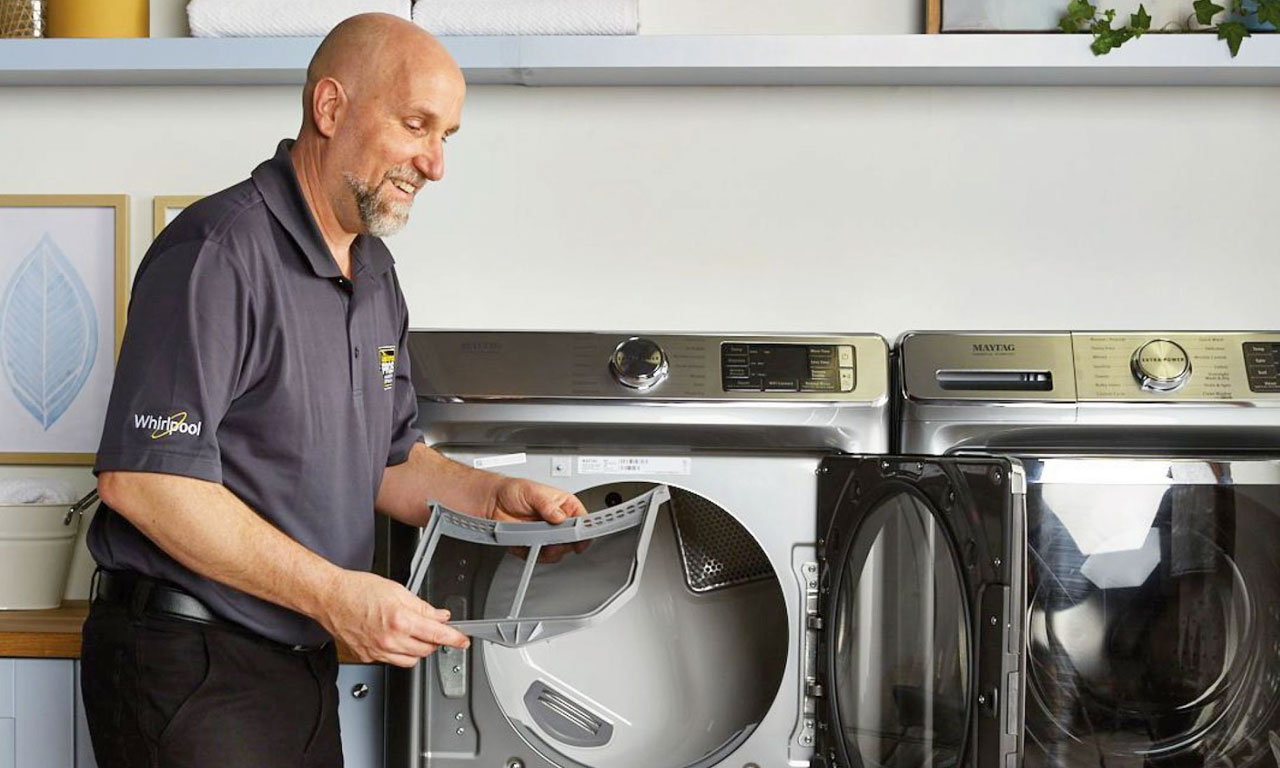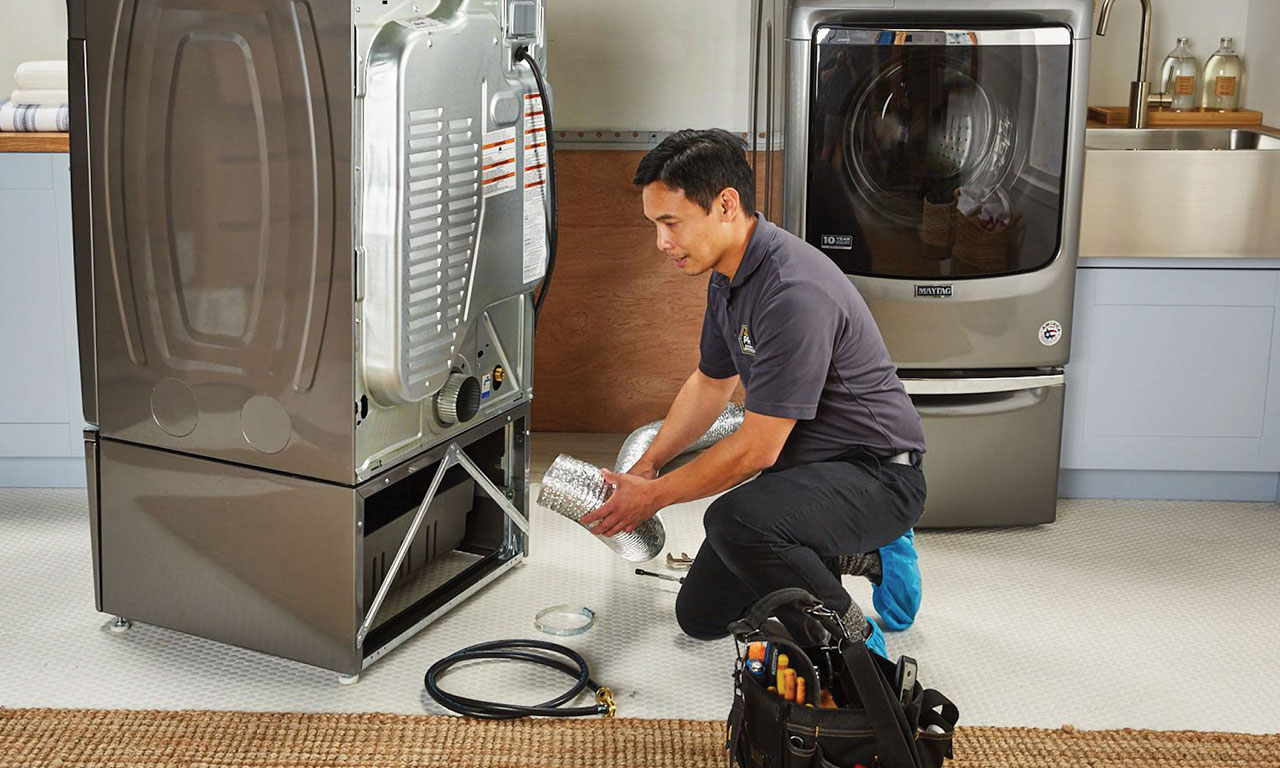It’s never fun having a broken appliance but some are more manageable than others. Your dryer not heating, though, can disrupt your daily life. If this happens to you, it’s important to know that some of the common causes behind this problem are easy to fix.
This guide covers how to troubleshoot a dryer that’s not heating. We’ll review some common causes and explore a few easy DIY fixes.
Common Reasons Why Your Dryer is Not Heating Up
The most common reasons behind most dryers not heating up enough or at all, include:
- Your dryer door is not fully closed
- Your dryer is on the wrong setting like the cool setting
- Your dryer is not plugged in
- There’s a circuit breaker that’s tripped
Do you have a gas or electric dryer?
Dryers are powered by either gas or electricity. Outside of a few exceptions, the causes and solutions will not vary between the two types of dryers. For instance, a lint screen covered in lint can happen to both gas and electric dryers.

Gas Dryer Not Heating: Possible Cause and Solution
One cause that is unique to a gas dryer not heating up is if the gas supply is compromised in some way.
Check that the gas supply is connected and the shutoff valve is opened.
Start by confirming that your dryer is properly connected to the gas supply.
Next, shift your focus to the shutoff valve. If it’s closed, the dryer’s drum will turn but it will not produce any heat. To open the shutoff valve in the supply line, turn the handle so that it’s parallel to the gas pipe.
Electric Dryer Not Heating: Possible Causes and Solutions
Here are a few common causes that are unique to an electric dryer that’s failing to produce heat.
Check your home circuit breakers
An electric dryer needs a separate 30 amp circuit that is fused on both sides of the line.
A dryer needs two circuit breakers to operate. One circuit is for operating the motor to turn the dryer drum. The other circuit is for operating the heating element.
If either is tripped, the dryer may not be able to heat up.
There could be an issue with the power cord
Every electric dryer needs a 240-volt power supply. If you do not have 240-volt, your electric dryer will not operate correctly.
If this is the case, you should consult with a qualified electrician.
Common Causes and Possible Solutions for Any Type of Dryer
These are common causes behind either a gas or electric dryer not heating, along with some solutions.
Inspect the lint screen to make sure it’s clean
A lint screen must be free of any lint and/or debris.
First, locate the lint screen either on top of the dryer or in the opening of the dryer’s door.
If it’s covered in lint or some form of debris, give it a good clean. You should be able to roll off anything that’s on it.
Do not try to wash off any lint as wet lint is very tough to remove.
Look if the outside vent or exhaust is clogged and restricting air movement?
A dryer requires ample airflow to execute a proper dry time.
Follow the direction of these images to clean your vent:
Make sure you are using the right type of vent
Read the labels on your dryer to make sure that the right vent is connected. Also, you want to use vent material made out of either rigid metal or flexible metal.
Use this chart to understand the venting requirements that can create optimal drying performance.
| Vent System Chart | ||
| Number of 90° elbows | Type of vent | Angled hoods |
| 0 | Rigid metal | 64 ft. (20 m) |
| 1 | Rigid metal | 54 ft. (16.5 m) |
| 2 | Rigid metal | 44 ft. (13.4 m) |
| 3 | Rigid metal | 35 ft. (10.7 m) |
| 4 | Rigid metal | 27 ft. (8.2 m) |
Choosing the right setting
Most dryers have auto-dry and timed dry settings. Choosing the wrong one could leave your dryer load wet.
During Automatic Cycles, the dryer senses both the moisture level and the drying air temperature. The dryer will automatically shut off when the load reaches the desired level of dryness.
With the Timed Dry setting, you set the amount of time that the dryer will run. You want to consider the load you need to dry to avoid over-drying, which can shrink items or cause wrinkles to form.
Timed Dry is great for a damp load that needs just a bit more drying time.
Is Your Dryer Still Not Heating? Need Help?
If you’ve tried the advice offered in this article and your dryer is still not heating up, you may need some professional help.
Feel free to contact us or schedule an appointment. Our pros will be more than happy to assist you to get your dryer up and running and working as intended.





